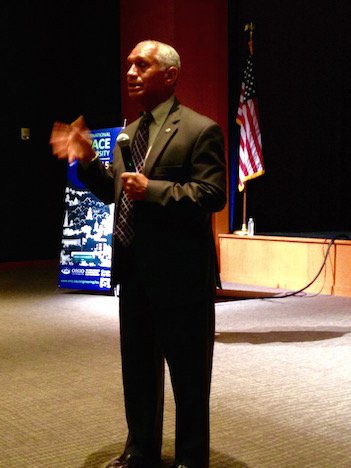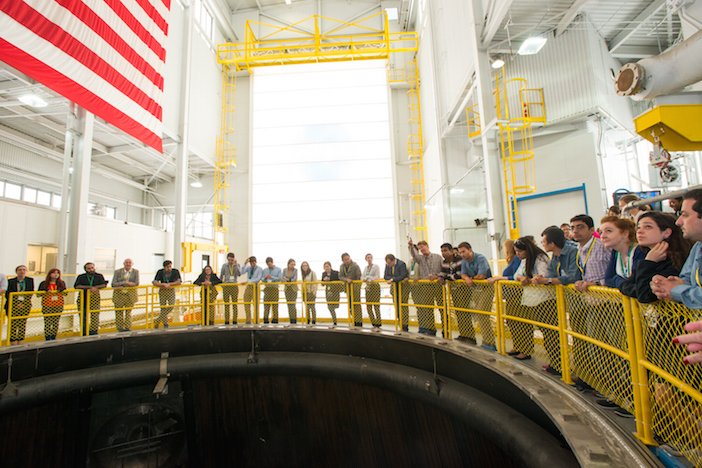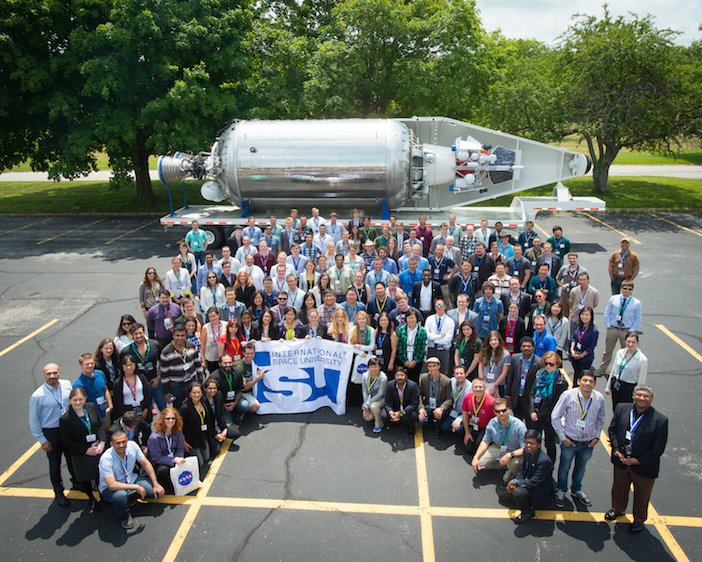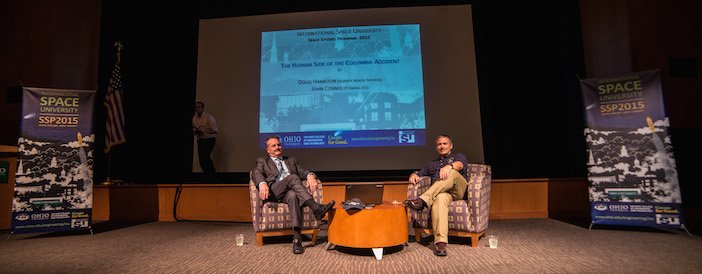International Space University: Week 4 -5 NASA
Hi all,
Life continues here at Ohio, as indeed does the hectic pace that I’m becoming accustomed to. Getting tired now. And emotional. Life is changing for me. I can feel it; one day I’m overwhelmed and frozen in terror and the next day exhilarated. I’m not sure if I can return to the way things were before, I’ve been exposed to so much now, it seems ridiculous that I would just go home and continue my life as if nothing had changed. Because everything has changed. For the better. But then I wonder if I’m brave enough to embrace that change. Change is good, but sacrifice also comes with change. How do you juggle everything? Keeping all the great things you already have as you move forward into the unknown? Everyday here at SSP brings a new challenge, but I get through it. And surprise myself of what I’m capable of, no matter what I’m working on. Its good work, probably some of the best stuff I’ve ever done. And I guess that’s why SSP is so great.
This last week has all been about NASA. Firstly we met Charles Bolden, Administrator of NASA, a warm and delightful man, with masses of charisma & smiles who answered every question we threw at him. I asked him would there ever be a scheme at NASA to allow Artists travel to the International Space Station (I was obviously speaking about myself!!). He kind of dodged answering me directly, but did think that there was an artist/ballerina who would be deserving of such an opportunity (dam you Misty Copeland!! A really lovely man, who seemed genuinely interested in each & every one of us. Still, he didn’t give me the answer I wanted!!

Our second slice of NASA was the long-anticipated 2 day field trip to NASA Glenn in Cleveland, Ohio. Made up of 2 facilities, one in Lewis and the other in Plumbrook- getting to NASA was a lifelong dream achieved for many of us. And it was truly incredible. All of it. We saw their largest vacuum chamber (it was huge!), the simulated Lunar Operations Lab, the Extreme Environment rig and wind tunnel and rocket propulsion testing facility, each building more impressive as the next. And huge! Every building and facility was enormous.
Seemingly ISU has been negotiating this trip for almost a year and our great and might director John Connolly has been pulling favours for months to make this happen. NASA don’t normally allow non-US citizens to visit their facilities. So we were very privileged to have this opportunity. NASA security was very tight. We couldn’t bring in any recording devices or cameras with us and every moment we were there, we were escorted by a series of serious looking NASA security men and their fleet of vehicles.

But somehow I’m finding the experience quite difficult to put into words. In a way, it almost felt like it wasn’t happening. Here we all were at NASA, the place that brought us the Apollo missions and the Space Shuttle and inspired so many sci-fi films and books and it felt, well, right. We all embraced the experience as if it was the most normal thing in the world. And I’m not really sure why. Maybe all the weeks at SSP has normalised everything. Maybe we’re experiencing ‘Normalisation of Deviance’. I dunno. Thats not to say that the experience wasn’t incredible- believe me, it was. But it just felt that I was ready to visit NASA. I’m not sure if that even makes sense. Given that, I did begin to appreciate the enormity of agency that is NASA- the Glenn Research facility is just one centre of 9 centres across the US. Thousands of people involved in research and development of each and every part of every US mission that launches off our planet. Every step of the operation meticulously planned and scheduled. It is thanks to their efforts that there have been so many more successful missions than failures. It is a level of detail like no other. We ended the trip with this group photo in front of a launcher and we all got on the bus & headed back to Athens, Ohio. Good times.

Photo: SSP Participants and staff at NASA Glenn Plumbrook. Credit:NASA Glenn
But I think one of the most significant events we had during this whole SSP experience, was ‘The Human Side of the Columbia Shuttle Accident’ event. NASA Flight Surgeon Dr. Doug Hamilton & SSP Director John Connolly (and also from NASA) shared their personal accounts of that tragic accident which occurred on February 1st 2003. They started by explaining how the accident happened- it seems that during launch, a large piece of foam fell from the Shuttle’s external tank and fatally damaged the spacecraft wing. But it was only upon re-entry that the effects of that damage had such fatal consequences. ‘Normalisation of Deviance’- thats what they termed as the cause of the accident, as was also the case of the Challenger disaster – its defined as “The gradual process through which unacceptable practice or standards become acceptable. As the deviant behaviour is repeated without catastrophic results, it becomes the social norm for the organization.” Basically, NASA were doing such a great job in Shuttle missions, launches became more day to day, and the enormity of the achievement of successfully completing missions became less impactful to them. And that seemingly is when mistakes can happen.

Picture: NASA Flight Surgeon Dr. Doug Hamilton & SSP Director John Connolly (NASA) at ‘The Human side of the Columbia Accident’. Credit: Shripathu Hadigal
Normally when you attend these types of events, there’s a safe distance between you and the people involved. They analyse the facts, the statistics, looking at everything from an objective viewpoint. You can observe it all. Not really thinking too much about the loss of lives. But its completely different when 2 people give their account of a day when they lost 7 friends and the impact it had on them, their NASA colleagues and the families left behind. Rick Husband. Michael Anderson. David Brown. Kalpana Chawla. Laurel Clark. William McCool. Ilan Ramon. Seven souls lost. And while I have read much about this accident, it gets a whole lot more real when you’re sitting in front of 2 men visibly moved and still grieving the loss of their dear friends. The room was silent and thick with emotion. Unexpressed emotion. What can you say? We all felt it. To me the silence was more powerful than any words uttered. It gave these 7 astronauts the dignity for the lives they led and the impact they continue to have on us all.
As I walked home in silence with some of my SSP colleagues, I realised that I now understood Space exploration differently- how truly incredible it is to have achieved so much already, and the reality of the massive human effort of thousands and thousands of people behind every attempt to put a man in Space and return him back home safely. And what a miracle it is that we haven’t lost more astronauts since we began exploring Space.
Thank you John, for pulling all those favours to get us to NASA. But more importantly, thanks to you and Doug for telling us about your lovely friends on Columbia.
Til next week, my friends.
